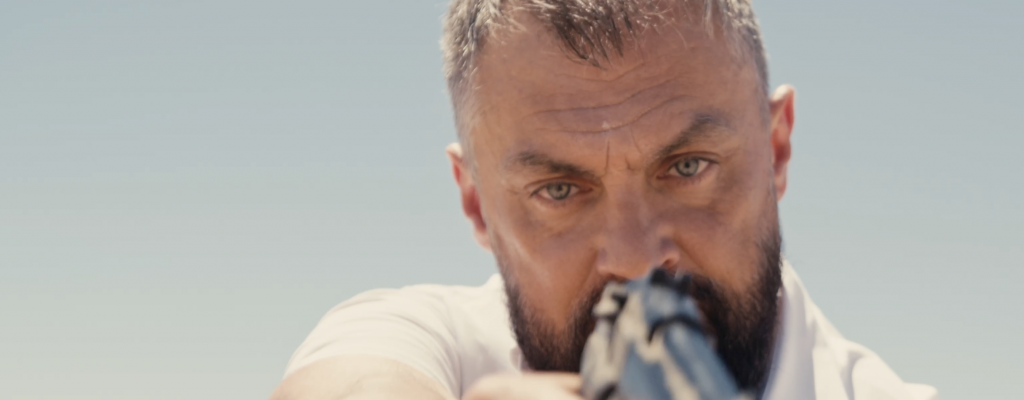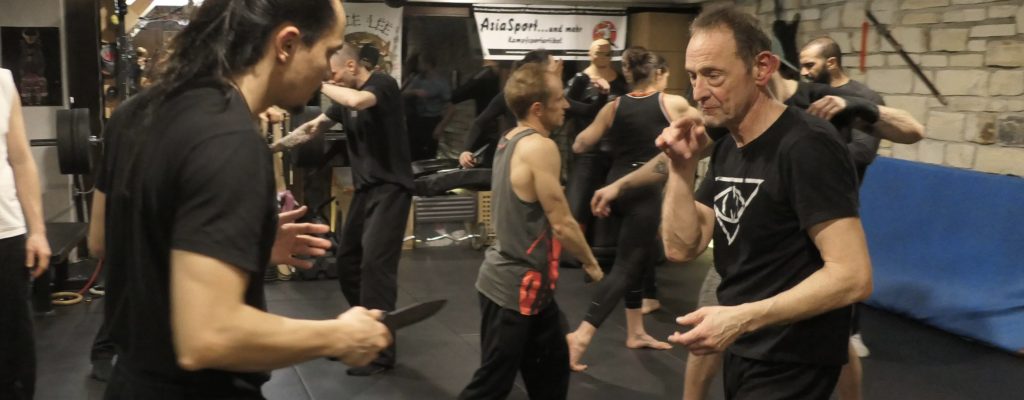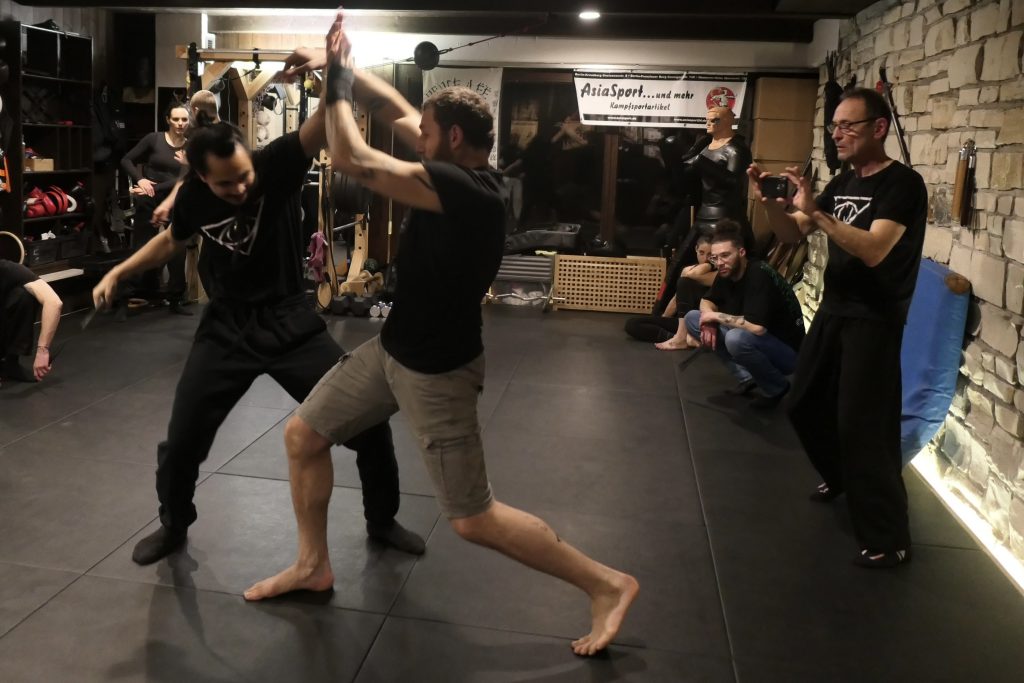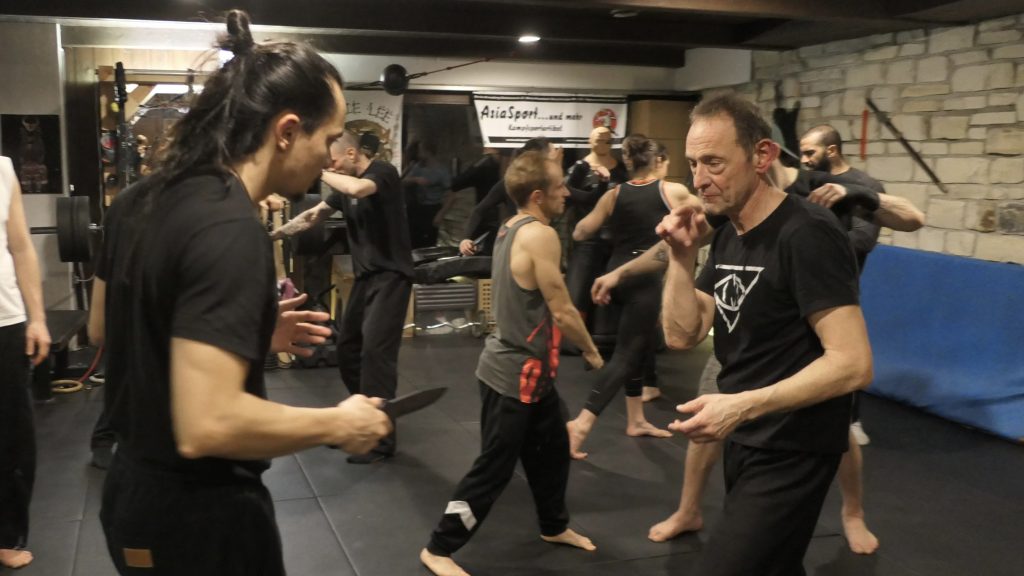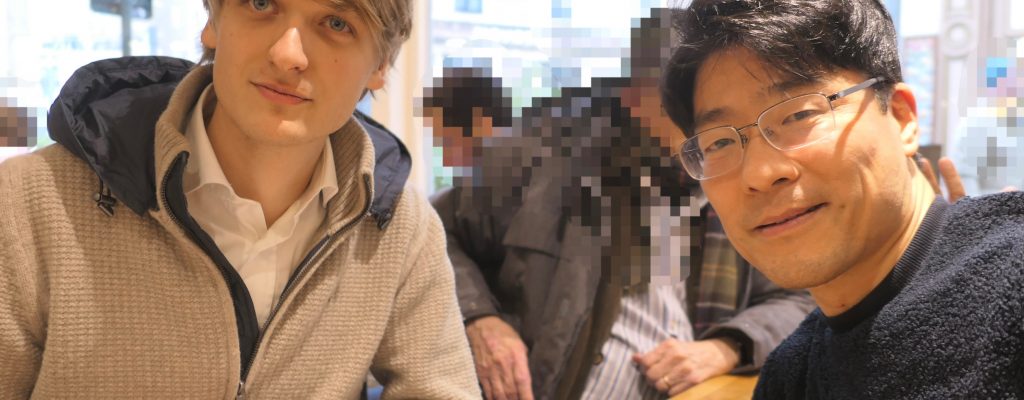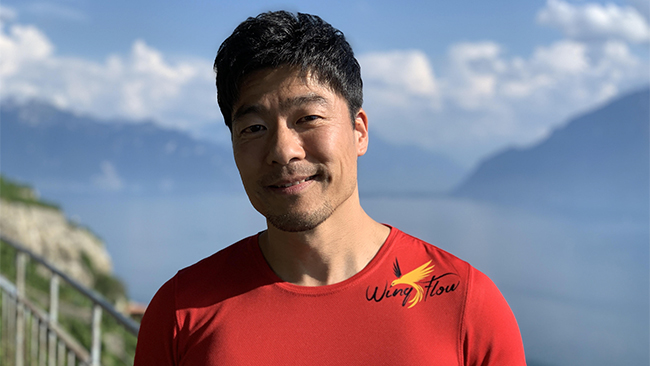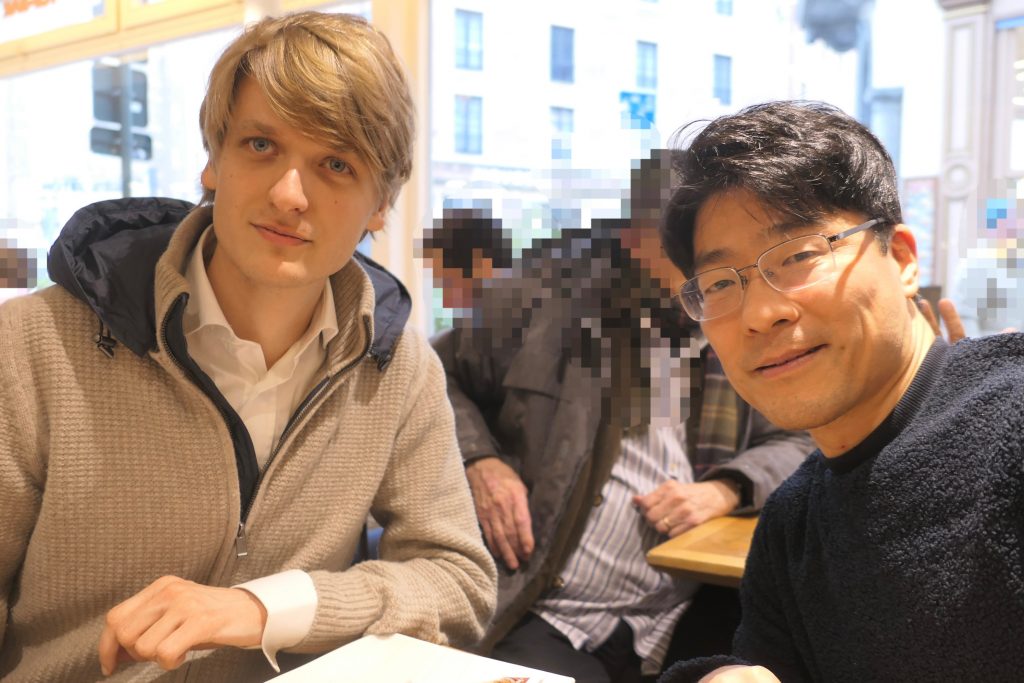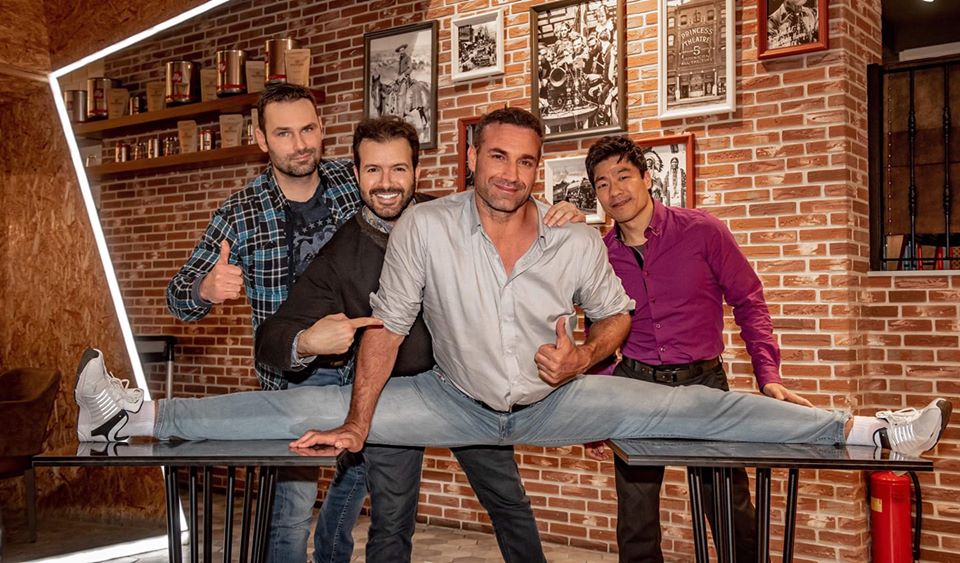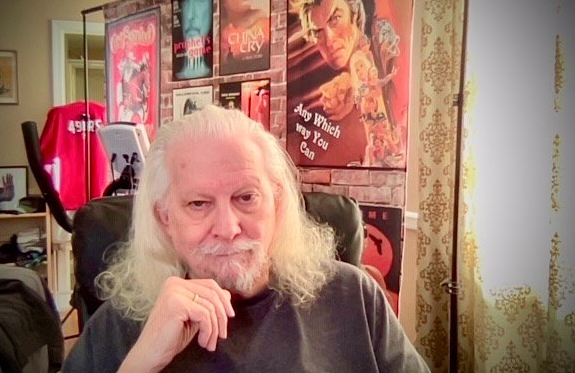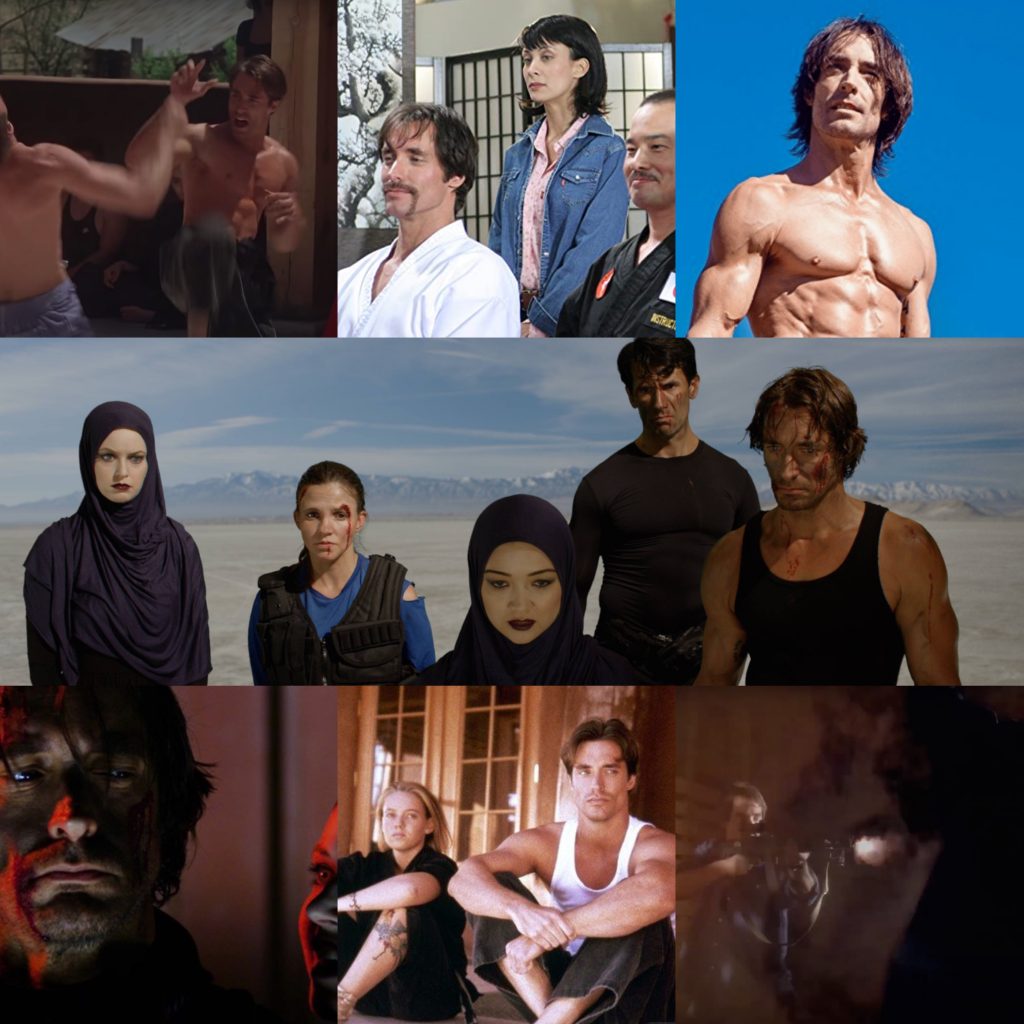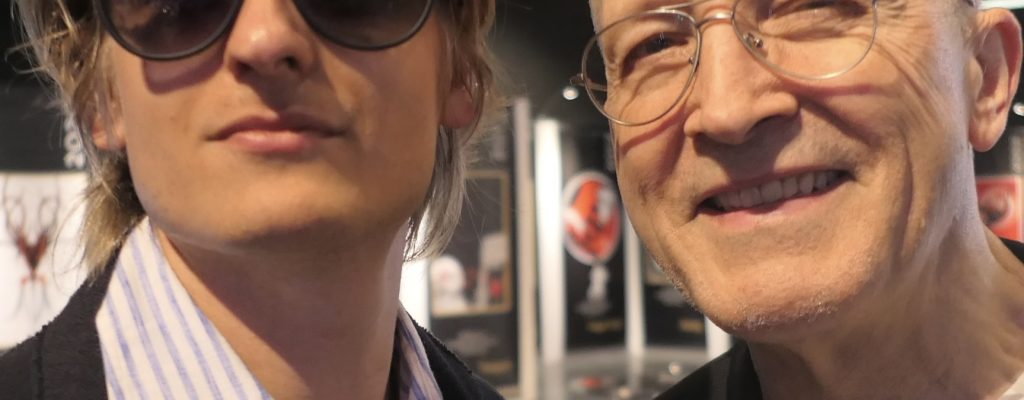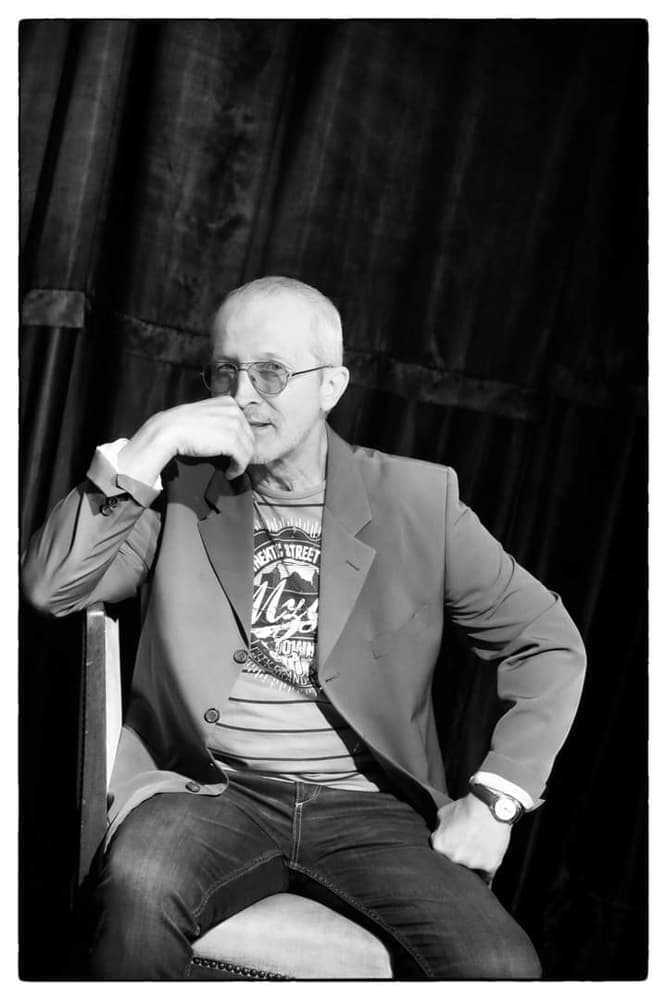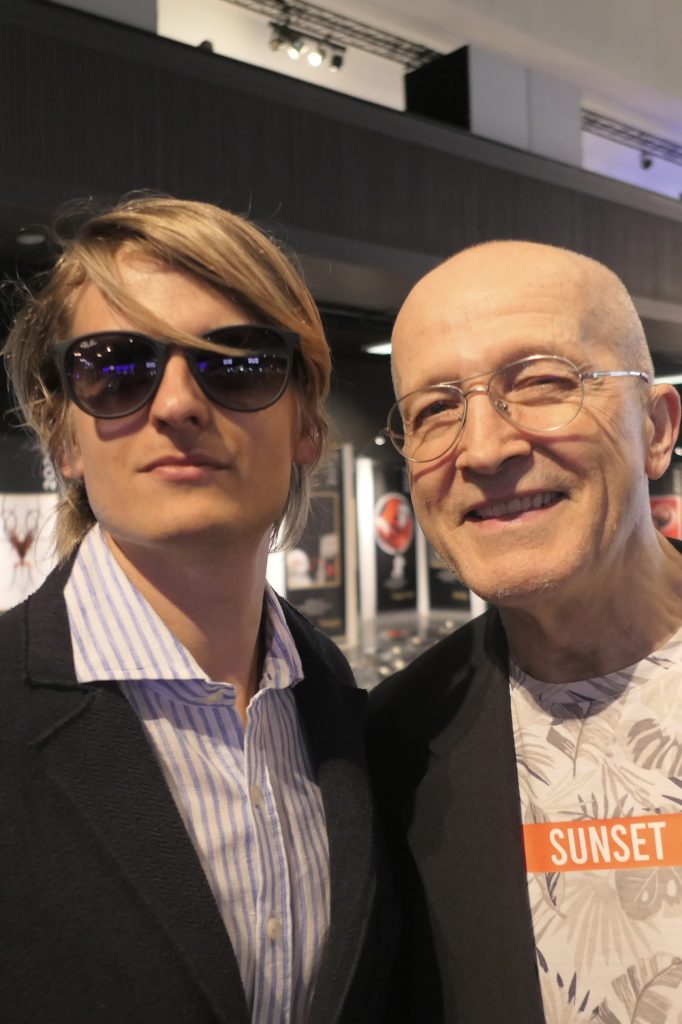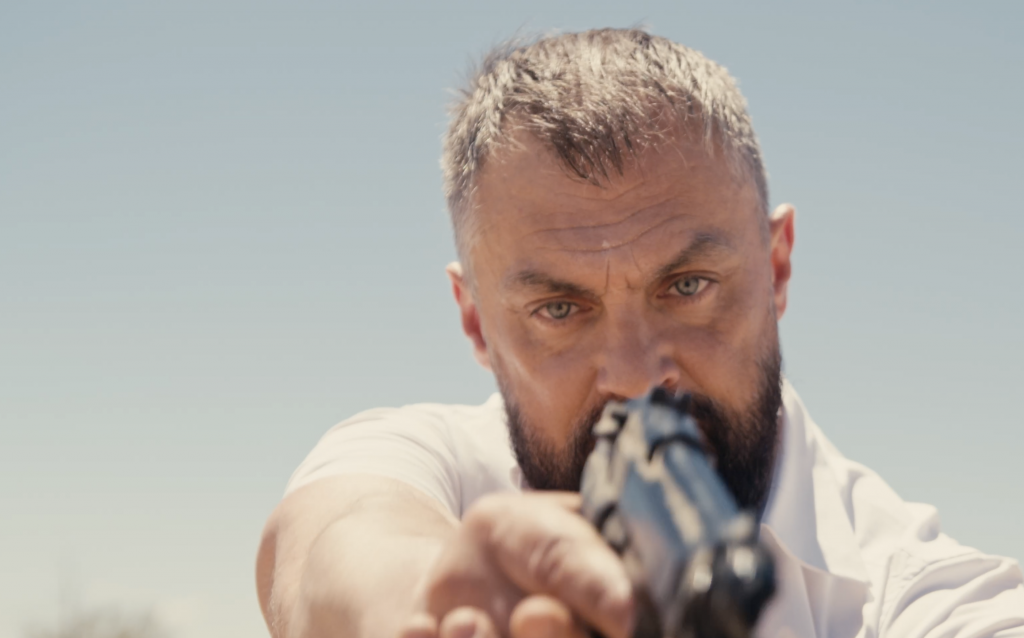
Alan Delabie is a French director, screenwriter, actor, producer, and martial artist. A black belt in karate shotokan, he is also trained in full contact and kickboxing and won the Nunchaku European Championship. In the movie field, he is notably known for the Borrowed Time trilogy, the last installment of which he co-directed with the man who mentored him in his cinematic adventure, David Worth.
Delabie has won awards at several film festivals, including the Los Angeles Films Awards, the Los Angeles Actors Awards, as well as festivals in Istanbul, Tokyo and New York. He also received an award at the famous Gala Action Martial Arts Magazine in Atlantic City. In 2023, he played the role of a vampire in The Last Nosferatu, for which he received the award for best actor. Still the same year, he played Alex Lapierre in thriller Shepherd Code.
Grégoire Canlorbe: Please tell us about The Last Nosferatu.
Alan Delabie: I fell in love at a very young age with two movie genres: action, and horror. One of my challenges has been of directing a werewolf movie, so I wrote a werewolf screenplay. I ended up turning to a vampire movie’s project as it was too hard to find the money for a werewolf movie: at least, one that can compare favorably with Stuart Walker’s Werewolf of London and John Landis’s An American Werewolf in London.
The Last Nosferatu tells a story that has nothing to do with that in Murnau’s movie; but the Nosferatu is not some unique character, it is a type of vampire instead. There is no action in The Last Nosferatu, which is all about horror with a special emphasis put on characters development and makeup. I wanted the process of my character’s transitioning from human to vampire to be as convincing as possible, both psychologically and in terms of physical changes.
Grégoire Canlorbe: How do you assess Klaus Kinski’s vampire in Werner Herzog’s Nosferatu?
Alan Delabie: Klaus Kinski, quite a personality—truly a madman, just as much a great actor! I love his work, as well as that of his daughter, Nastassja Kinski, the panther in Paul Schrader’s Cat People. Werner Herzog’s Nosferatu and Klaus Kinski’s vampire portrayal in the latter are certainly great. I nonetheless prefer the original Nosferatu movie, which Friedrich Wilhelm Murnau’s directing—and Max Schreck’s acting and makeup—make an unsurpassable classic. The fact it is silent, and black and white, only increases the mystery and horror…
Grégoire Canlorbe: What is your assessment of contemporary horror movies?
Alan Delabie: Today many of those horror movies with spectacular visuals just forget that they should have a good screenplay. Conversely many independent horror movies have a creativeness and crafty screenplay that are counterbalancing their lack of technical, financial means. That classic that is A Nightmare on Elm Street, which frightened me while I was a child, was already made with a budget only of $1.1 million (what remains relatively low, even in the 1980s). Yet it could rely on Wes Craven’s brilliant writing and directing, not to speak of Robert Englund’s legendary interpretation. A blockbuster remake of Nosferatu, as dazzling as its CGI would be, could barely hold a candle to the 1922 movie, no more than the remake of A Nightmare on Elm Street can compare with the original Freddy movie.
Over the course of one of my stays in Los Angeles, I was surprised to notice how the house that “acted” as that of Heather Langenkamp’s character, Nancy Thompson, and the house that “acted” as that of Johnny Depp’s character, Glen Lantz, are really standing in front of each other.
Grégoire Canlorbe: It seems turning a Hollywood dream into a reality is what the “borrowed time” of your life path is being spent notably.
Alan Delabie: Living the Hollywood dream was a childhood dream, which I would never give up. I had already performed many stage demonstrations on French and Belgian television, and acted in TV movies and series like À tort ou à raison [Rightly or Wrongly], when Jalal Merhi offered me that I be part of his TV program Master of the Arts (aka Road to Hollywood). I would later write and film, and act in, my first feature, Eight Hours, a psychological thriller that would end up being projected in San Diego. Then I would start acting in a number of short movies and web series in America, and have the idea of the Borrowed Time web series. The unexpected fruit of that idea would be a movie trilogy.
You know, it is an illusion to think that you gonna become a Hollywood actor just because you proved your worth as a martial artist. A martial artist who wants to be an actor, but who is no good actor, just a good martial artist, can hardly impress Hollywood and get a role in some major production. By contrast a good, charismatic actor, if he is no martial artist, can still end up in a Marvel production in which he will have doubles carrying out all (or some of) the stunts and fights.
Assuredly a good way of challenging, proving my actor abilities was through venturing into the horror genre as I did with The Last Nosferatu, Meosha Bean’s MVB Films Halloween Horror Stories Vol II, or even with Chris Power’s Bloodslinger, a Canadian feature that is nicely interweaving horror and western.
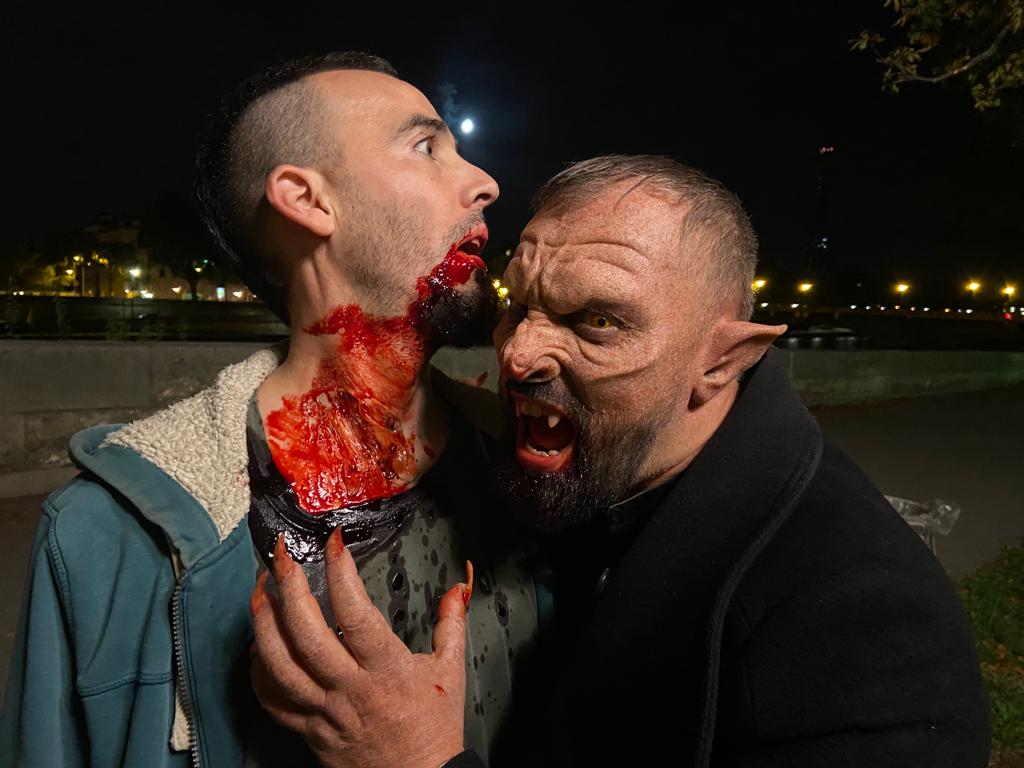
Grégoire Canlorbe: Two cases of a filmic intertwining between horror and action that come to my mind: George Romero’s Land of the Dead, and Lucio Fulci’s Zombi 2 with its iconic shootout in the hospital…
Alan Delabie: I am an admirer of George Romero’s work, which The Walking Dead and its slowly walking zombies, who cannot get killed unless they’re shot in the head, have been massively inspired by. My favorite movies by Romero are Night of the Living Dead, and Dawn of the Dead. Land of the Dead is a good installment in Romero’s Dead series though.
You do well to mention that unofficial sequel to Night of the Living Dead that is Lucio Fulci’s Zombi 2, as Fulci is one of those brazen masters of horror who’ve left their imprint on my filmic sensibility. The scene of the hospital shootout, or that of the eye, or that of the shark, they highlight how Fulci was willing to push the limits of what can be shown onscreen. Joe D’Amato—just think of his Anthropophagus—is another of those cheeky pioneers who were afraid of nothing.
You must know that Catriona MacColl, who extensively collaborated with Lucio Fulci, acts as Franck Denard’s mother in Borrowed Time. She is my spiritual mother in the movie field actually. We did a short movie together, Mourir d’Aimer [Dying of Loving].
Grégoire Canlorbe: Speaking of Franck Denard, how did you have the idea of that character? Is he a projection of you in some other timeline?
Alan Delabie: No, Franck Denard is completely opposite of me. While I was in San Diego on a rainy, gloomy day, I decided to spend time writing and then came up with the idea of a short web series about a man who, while leaving prison and suffering from a brain tumor, establishes himself as a vigilante.
After I made a few capsules, and a friend of mine in Los Angeles, Meosha Bean, discovered those, she suggested to me that the idea should be developed into a feature. Anatomy of an Antihero: Redemption (aka Borrowed Time), with she standing as a director and me as a writer, would be launched shortly after. Although the end of Borrowed Time implied a collapsing Franck Denard, shedding tears of blood and refusing to continue to take his medications, was about to die on the beach, a producer would express interest in launching a sequel. I proposed that we work instead on a prequel dealing with Denard’s stay in prison and what happens between his release and those ulterior events related in Borrowed Time. The producer agreed, and I started writing Denard: Anatomy of an Antihero (aka Borrowed Time 2), which I would direct as well.
It was too hard to get the authorization to film in a jail, so the prequel, which I first planned to contain a large segment—half of the plot—set in a prison environment, would end up with only a few custodial scenes, all in the form of flashbacks. The success the second installment would meet on streaming platforms would arouse the launch of Borrowed Time 3: Falling Apart, which I would co-direct with David Worth. When working on Anatomy of an Antihero: Redemption, I could hardly imagine there would be any additional installment; but I now believe a trilogy is what Borrowed Time had always been destined to be.
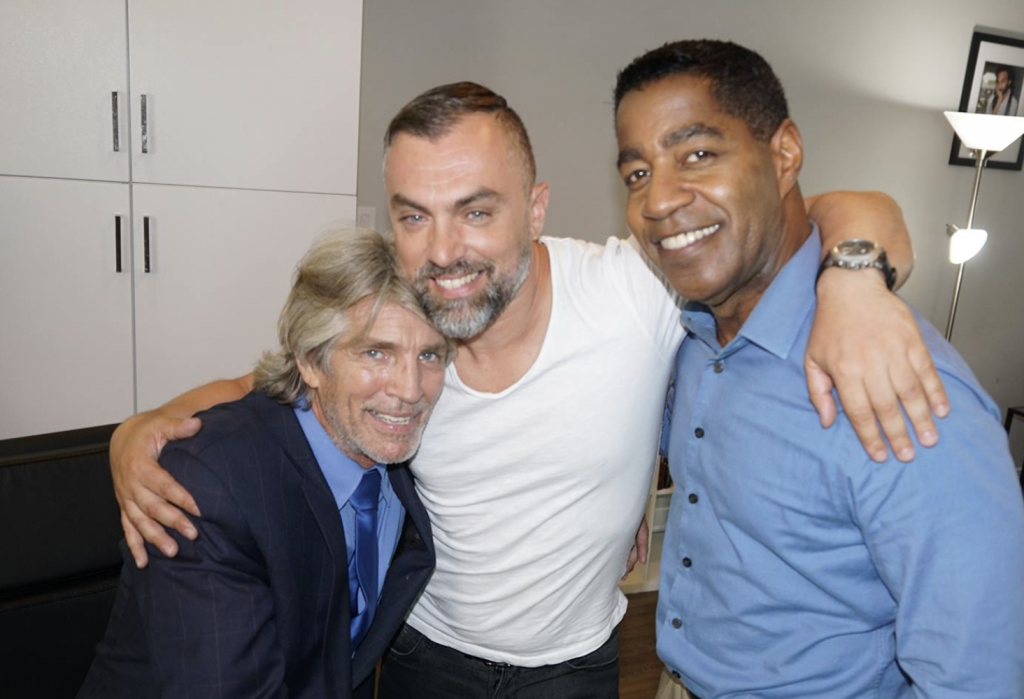
Grégoire Canlorbe: Two climactic moments in the saga are respectively your fight with Abdelkrim Qissi, and the training montage featuring you alongside Mohammed Qissi.
Alan Delabie: Yes, and you can discern some inspiration from Abdel’s fight at the end of Lionheart. I somewhat regret that Abdel and I didn’t find time to rehearse our choreography as thoroughly as we should have. David, who was kind enough to check the editing of the training montage, gave me some helpful advice.
Besides Abdelkrim and Mohammed, the Borrowed Time have assuredly allowed me to collaborate with a variety of other great actors: to name but a few, Eric Roberts, Costas Mandylor, Louis Mandylor, Patrick Kilpatrick, Matthias Hues, or Bob Wall, legendary opponent of Bruce Lee.
Grégoire Canlorbe: Did those contracts you made with producers ask you to cede the copyright on Borrowed Time?
Alan Delabie: No, I could keep the copyright.
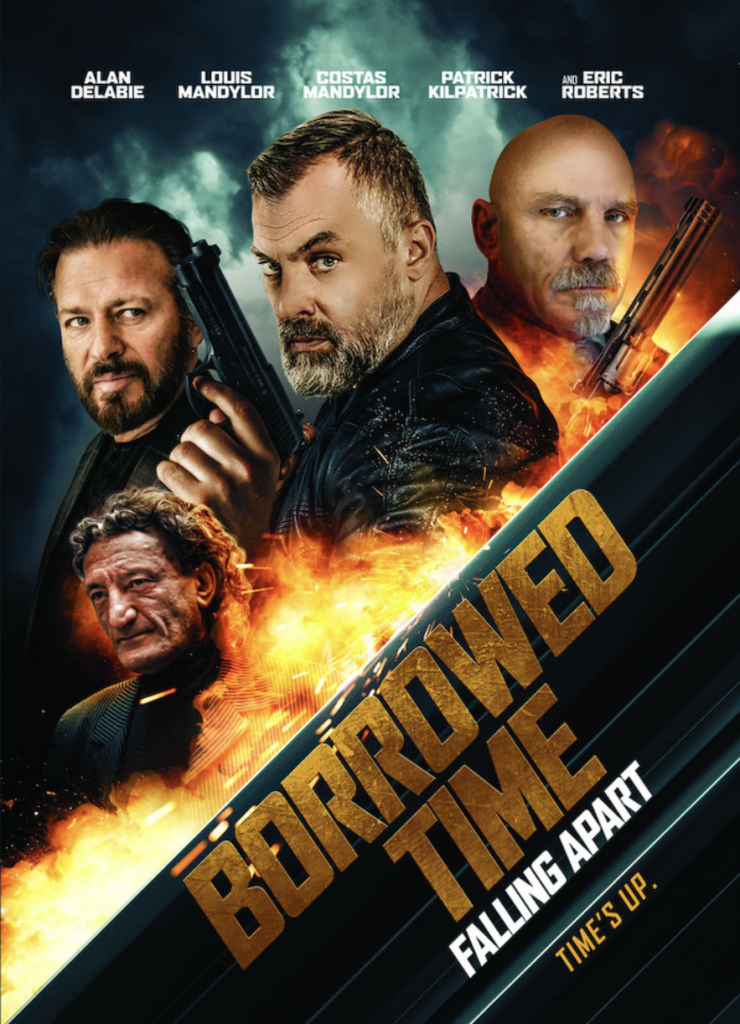
Grégoire Canlorbe: How both of you came to codirect Borrowed Time 3: Falling Apart is a high moment in that adventure that has been your mentorship by David Worth.
Alan Delabie: It’s been more than thirteen years since I’ve been in touch with David. I had the audacity to reach him, and to introduce him to the early tentative steps of my work in the movie field. Since then, indeed, he has been mentoring me, and following and assessing my modest achievements.
The first time I would meet David physically would be in 2013 in Los Angeles. At the time, he was teaching in San Francisco and doing several rounds trips between L.A. and San Francisco. When meeting we felt a time would come when we would do some movies together. A few years later, I would write Borrowed Time 3 and then submit the screenplay to David, who would see some potential in it. That is when I asked him whether he would agree to take charge of the L.A. part, while I would personally take care of the Europe part. David accepted my offer, and we would have much pleasure working together on the movie. After the filming was complete, David let me know that, whenever I would have a new project situated in L.A., he would be there to help me.
David has been checking my work since even before he codirected Borrowed Time 3. You can easily imagine how stressed I am whenever the man who directed Kickboxer and made the photo for two Clint Eastwood classics is judging my way of filming, editing, and acting. His criticism is always constructive though.
Here are two things he taught me, which I would like to convey in turn. Firstly: no matter how you edit it, if that footage you’re working on is bad, you cannot fix it. Secondly: it’s better for that footage you’re working on to have a good sound and average picture quality than have an average sound quality and good picture quality. Sound is really what gonna allow you to stand out.
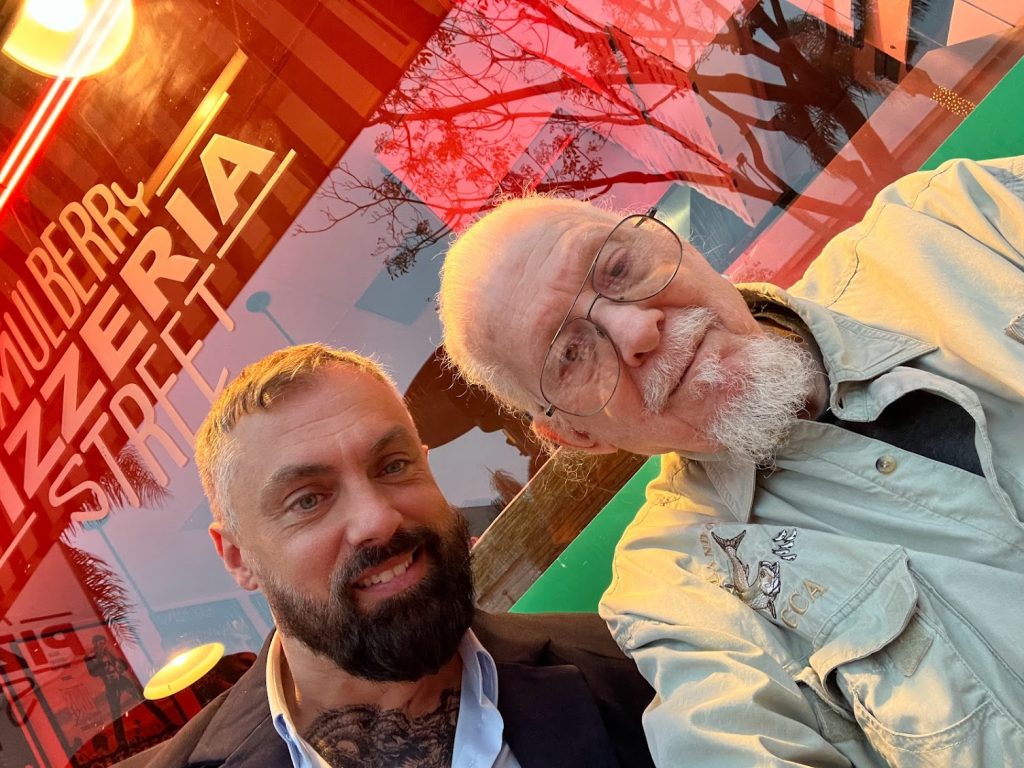
Grégoire Canlorbe: You used to be compared to Jean-Claude Van Damme.
Alan Delabie: I indeed used to be compared to him, and to personally find inspiration in him. I am just being myself today. Jean-Claude’s charisma is unique, and unsurpassable. He has a warrior face that is cute, angelic at the same time. Whenever he acts as a dark character, he doesn’t shine really. JCVD is clearly at his best when he acts as a light-hearted, combative character, one who may go through sadness and anger, but in all circumstances remains cheerful and gentle and never stops fighting. It is something David Worth could capture beautifully.
Grégoire Canlorbe: A contemporary horror movie that was made from a modest budget is Damien Leone’s Terrifier. The latter and its sequel, Terrifier 2, were respectively made from $35 000 and $250 000. Both movies are great, and have been successful financially and in terms of buzz. Do you believe an independent action movie can be as fortunate nowadays?
Alan Delabie: Two remarkably well chosen examples. Damien Leone has managed to create a clown character who is truly terrifying and catchy, and who rivals with Stephen King’s It. I prefer the first Terrifier installment, which I find to be more effective and original.
Yes, an independent action movie can be just as “fortunate,” both “financially and in terms of buzz,” but it is harder. You must know that, nowadays, an independent action movie with a budget exceeding $300 000 is never gonna be able to recoup its costs most likely. It is something I learnt through Don “The Dragon” Wilson, who is accustomed to acting in action movies with a budget situated between $300 000 and $500 000. The reason is situated at the marketing level. An independent action movie just cannot compete with all those action blockbusters that can put dozens of millions of dollars into their communication and advertising.
True, your movie may still create a buzz with a modest marketing budget (or even no marketing budget at all), but a buzz is something way easier to arouse with a horror independent movie than it is with an action independent movie. Winnie-the-Pooh: Blood and Honey had a fun, original concept that caused a sensation. Anyway all independent movies, when it comes to breaking even, face a same problem at the level of distribution. Given the public at large is increasingly relinquishing both the movie theaters and physical supports, it is increasingly unlikely for an independent movie to be offered a release other than just on a streaming platform. Yet that type of release is less rentable.

Grégoire Canlorbe: You’re acting as a French professional killer, Alex Lapierre, in Shepherd Code. It seems you’re inscribing yourself in the lineage of Alain Delon in Jean-Pierre Melville’s Le Samouraï…
Alan Delabie: Alain Delon with his stern face and cold, stoic interpretation was perfect as Jeff Costello. I would love to meet him someday. To me, he is a lion, so are Jean-Paul Belmondo, Lino Ventura, Jean Gabin, and Michel Constantin. Alex Lapierre is a role that would fit Van Damme better than Delon though.
Grégoire Canlorbe: How was the Shepherd Code project born? What is its spirit?
Alan Delabie: At first, while there were three of us to be willing to invest into a new movie project, I wanted to direct a sequel to The Last Nosferatu. I planned my character to be chased by an equivalent of Van Helsing, whom I wanted to be played by Silvio Lumac. As my makeup artist wasn’t available at the time, I turned to another synopsis of mine, one about a hired killer who wants to make his last mission before retiring.
I developed a screenplay from that synopsis, and then had the project launched with Don Wilson cast as the backer of my character’s last mission and David Worth attached to the project as an assistant producer. I also cast Silvio Lumac as a rival assassin, whose relationship with Alex Lapierre is similar to that Antonio Banderas’s character is having with Sylvester Stallone’s character in Richard Donner’s Assassins. I codirected Shepherd Code with Lh Chambat, who had edited The Last Nosferatu. We shot in L.A., Bristol, Lisbon, and Paris.
Shepherd Code isn’t only about suspense and action. The introspection Lapierre finds himself proceeding with as he is carrying out what is supposed to be his last mission, the way he becomes aware of the source of his troubles, it is something I also wanted to stand at the core of Shepherd Code.
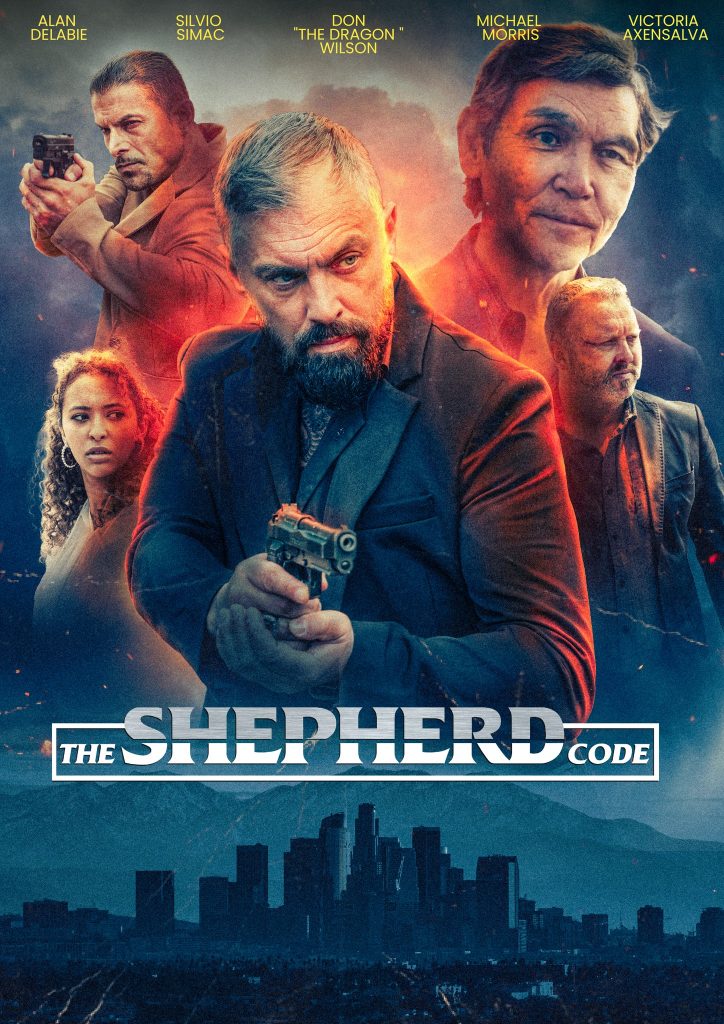
Grégoire Canlorbe: Are there a few scenes of Shepherd Code you would like to tease?
Alan Delabie: Yes, one in the desert with a white car whose trunk is being opened. Another one I would like to tease features two characters—the one played by Michael Morris and mine—shooting at the same time. Both scenes clearly have a Tarantino vibe. There is still another scene I would like to tease, which features David Worth doing a cool cameo.
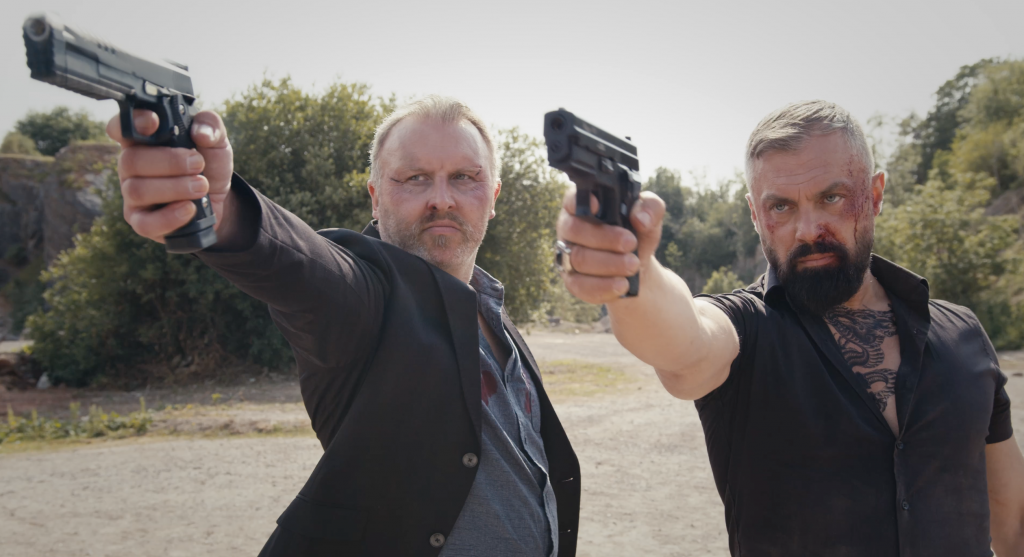
Grégoire Canlorbe: Both Shepherd Code and Borrowed Time 3 had parts shot in Los Angeles. L.A. is reportedly a good place for filming, with great urban landscape for action.
Alan Delabie: Honestly L.A. is a nightmare for movies. You cannot shoot there without any license. If you start filming in the street without any delivered authorization, you soon end up getting stopped by the police and finding yourself with a fine. We were lucky that we could rent locations for the filming in L.A.; but, frankly, the urban landscape isn’t especially nice there.
Most of those scenes featuring a shootout in the streets of L.A. are actually filmed in a studio nowadays. That is because insecurity and violence are now reigning in L.A., and you can be easily mugged or have your equipment stolen whenever you’re filming there. It happened on Shepherd Code’s set. Our boom operator had his boom mic stolen just in front of us, but we could get it back fortunately. It is no wonder that many companies delocalized their filmings from L.A. to Atlanta. Anyway we could capture some strong visuals in L.A., especially that scene on a building’s roof. What we shot in the desert is just as impressive.
Grégoire Canlorbe: Does the way Paris was shot in John Wick 4 resonate with you?
Alan Delabie: I like the three previous John Wick movies very much, but that fourth installment left me somewhat disappointed. It is as if the magic, including in the Paris segment, had vanished. It was nice to see Scott Adkins being offered an original role (in the Berlin segment) though. To me, his best movies are Undisputed II: Last Man Standing (aka Boyka) and its sequels, as well as Avengement and The Debt Collector and its sequel.
Grégoire Canlorbe: Do you believe the sound, visual quality is something you can achieve even with modest technical means?
Alan Delabie: A few months ago I was with David Worth, who had just bought a new iPhone. We did some videos tests with his iPhone, and we witnessed how it could shoot in 6K not less than in slow mention. With two iPhones (at least, that model or one comparable), two tripods, and a lavalier microphone, you’re perfectly in a position to shoot something that is quite good in terms of sound and visuals. David suggested to me that I watch Tangerine, a feature that was shot entirely with three iPhones. I must say the movie isn’t bad at all.
I positively react to the fact that, in a sense, it is now increasingly easier to get the technical means to make one’s movie, and even to have one’s work released. If you cannot have your film rendered available on a streaming platform, you can still post it on YouTube, which remains a way of getting your work known. But beware: if you want to make a (good) movie, you must be able to proceed with a team job and, accordingly, to delegate some tasks and to respect, listen your colleagues. Also, you must be ready to be held to account whenever you’re getting your funds through a crowdfunding or some directly reached investor or sponsor.
Grégoire Canlorbe: How do you feel about The Last Kumite?
Alan Delabie: Quite a cool project. I am somewhat disappointed that Émilien De Falco wasn’t part of the adventure, as he would have been perfect as a lead character. It obviously remains a great cast with people like Matthias Hues, Billy Blanks, Kurt McKinney, Cynthia Rothrock, and both Qissi brothers. I heard there was a fight between Billy and Matthias, which I obviously look forward to discovering. I collaborated with Animal King, a capoeira master who fights in The Last Kumite. I must say he is very talented.
Grégoire Canlorbe: You’re regularly involved with the score of your movies. Would you be ready to collaborate with Goblin band, who composed the soundtrack of many Dario Argento and other Italian horror classics?
Alan Delabie: I love Goblin’s work. To me, they reached their summit with the soundtrack of Luigi Cozzi’s Contamination. Yes, I would be ready to collaborate with them, as well as with Fabio Frizzi, the composer on Zombi 2 and many other Lucio Fulci classics.
Grégoire Canlorbe: Thank you for your time. Is there something you would like to add?
Alan Delabie: It was quite sympathetic. I may be the conductor whenever I am alone to direct a movie; but I would be nothing without my collaborators. I may do my best to deliver a good movie; but my work could hardly shine if it weren’t for the talent of each of my actors, and that of each of my technicians. That’s why I attach special importance to bringing to light my collaborators and their credits, and to carrying out an authentic team job in a spirit of gratefulness.
That conversation was initially published on Bulletproof Action, on 3 October 2023
